Japan is a land of high mountain ranges and steaming volcanoes. The Japanese archipelago, located along the Pacific Ocean’s “Ring of Fire,” was, in essence, created in tandem with the formation of these remarkable mountains.
Continental crusts colliding together over the eons shaped many of the mountains in Japan today, including the snow-capped Japanese Alps, which form the spine of the main island of Honshu.
Japan is also home to many impressive volcanic peaks—most notably the iconic Mt. Fuji, near Tokyo. Around three-fourths of Japan is dominated by mountainous terrain.
If you’re a lover of vertical ascents, you’ll want to add at least one of these 11 extraordinary mountains in Japan to your “The Land of the Rising Sun” itinerary, affording you bird’s-eye views of Japan’s gorgeous valleys, mountain crests, ocean shores and more.
Mt. Fuji, Tokyo
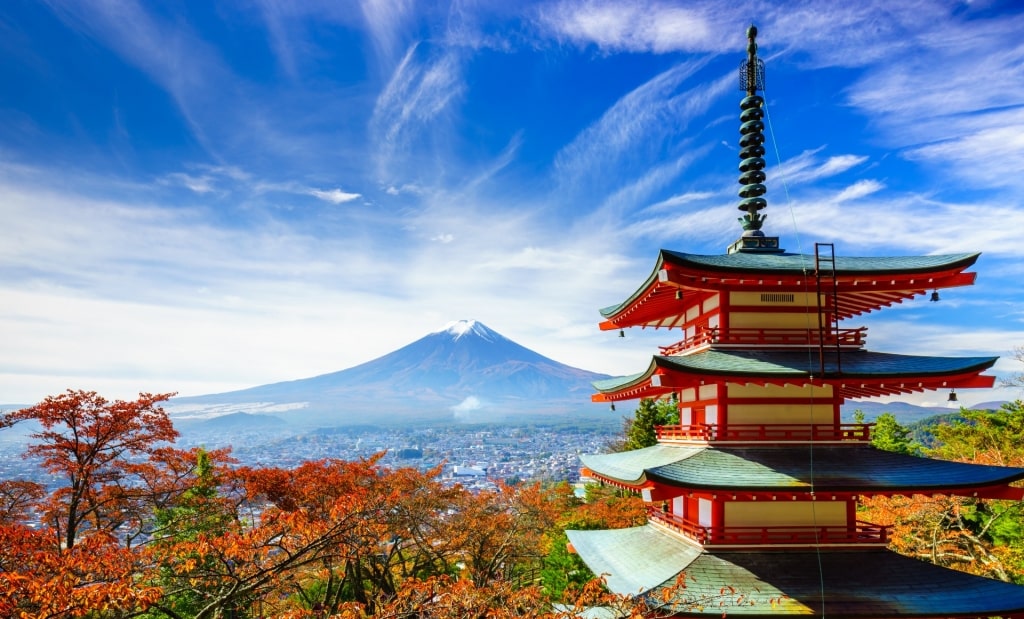
Mt. Fuji, Tokyo
As far as mountains in Japan go, Mt. Fuji probably tops your bucket list of peaks to “bag”. The good news, despite this basaltic stratovolcano’s imposing presence and considerable height of 12,388 feet, is that the climb to the top isn’t a technical ascent.
If you’re in reasonable shape and have enough time, you can reach the summit of this famous Japanese landmark in five or six hours—although no rule says you have to summit.
Buses from Tokyo’s Shinjuku Station will drop you halfway up the side of the volcano at the Subaru Line 5th Station. From the station, you can admire close-up views of Mt. Fuji’s peak directly above you, and the tranquil backdrop of Fuji Five Lakes—Kawaguchiko, Motosuko, Saiko, Shojiko, and Yamanakako—in the valley below.
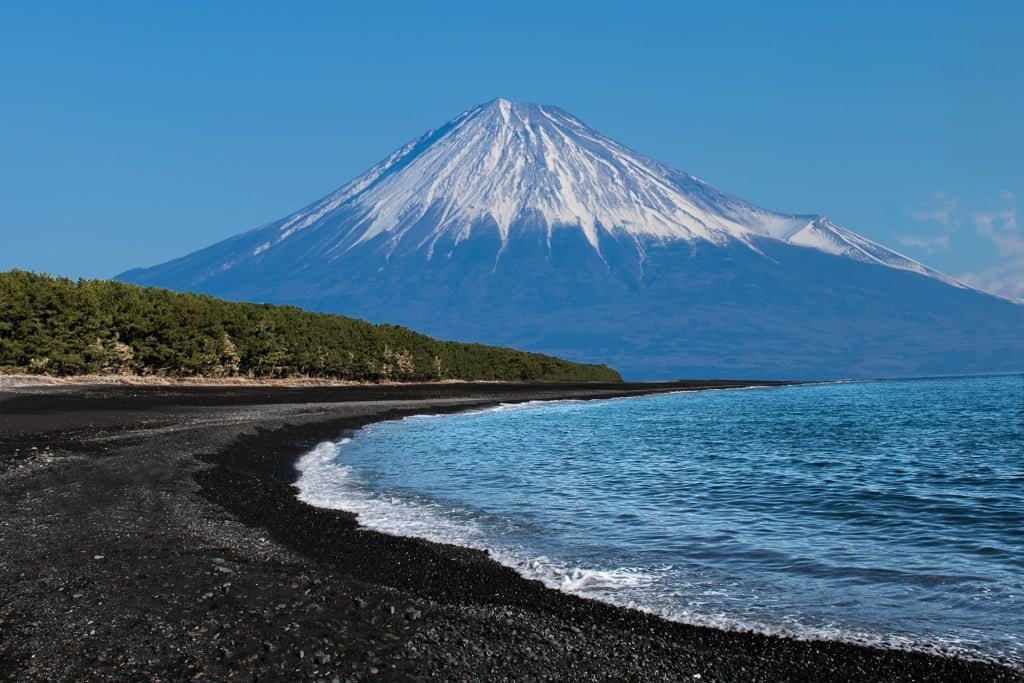
Miho-no-Matsubara beach, Miho Peninsula
If tackling Fuji’s slopes isn’t in the cards, Lake Motosuko, the westernmost of the five lakes, offers grand views of Fuji’s often snowy summit, as does the pebbly Miho-no-Matsubara beach—one of the best beaches in Japan—bordered by a fetching seaside pine forest, located on the Miho Peninsula, near Shizuoka City.
Mt. Rokko, Kobe
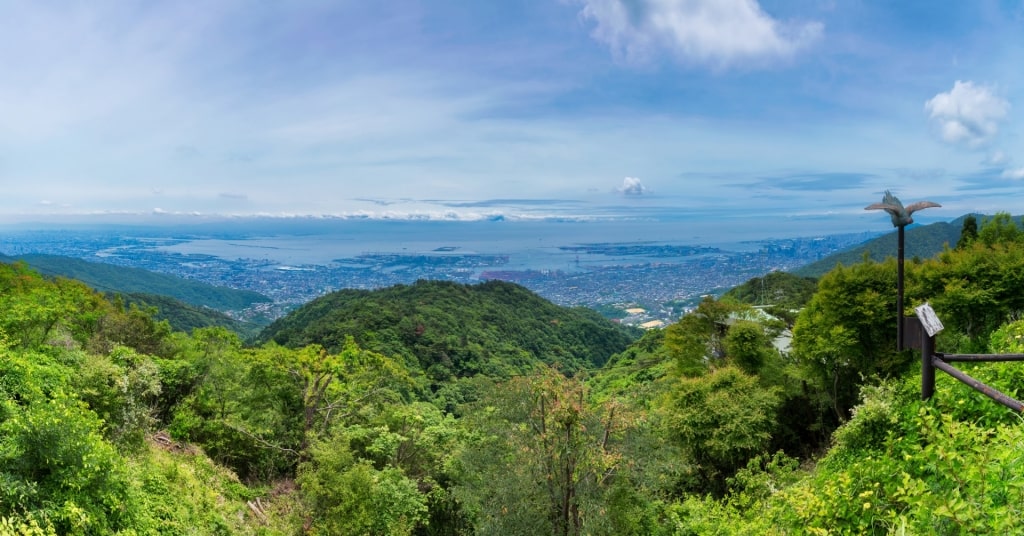
Mt. Rokko, Kobe
Close to the port city of Kobe, you’ll stumble across the exquisite Rokko mountain range, and Rokko Saikoho, the range’s tallest peak, clocking in at 3,054 feet.
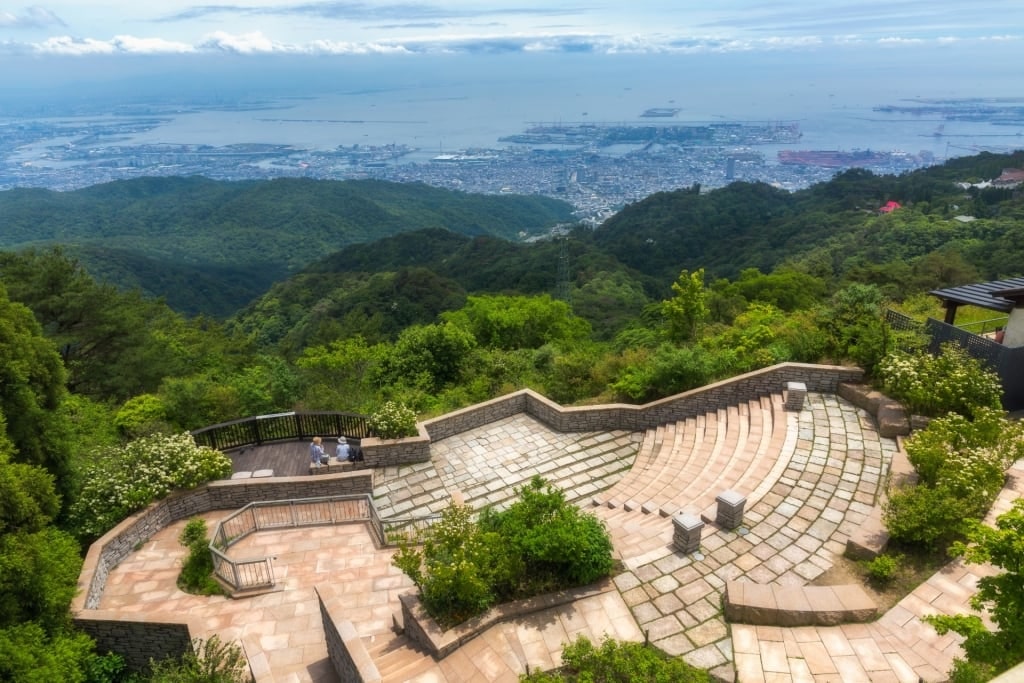
Rokko Garden Terrace, Kobe
One of the most beautiful places in Japan, the leafy Rokko mountains are ideal for elevated views over Kobe and ultra-urban Osaka. The Rokko Garden Terrace, surrounded by lush greenery, offers spectacular vistas across Kobe and Osaka Bay.
The Rokko mountains, reachable by bus, cable car or on foot from Kobe City, host an attractive botanical garden as well, featuring a wide variety of rugged alpine plants.
You can also call upon the tuneful Rokko International Music Box Museum, stroll along the range’s inspirational hiking trails, and enjoy the crisp mountain air, all a refreshing reprieve from the bustle of the cities.
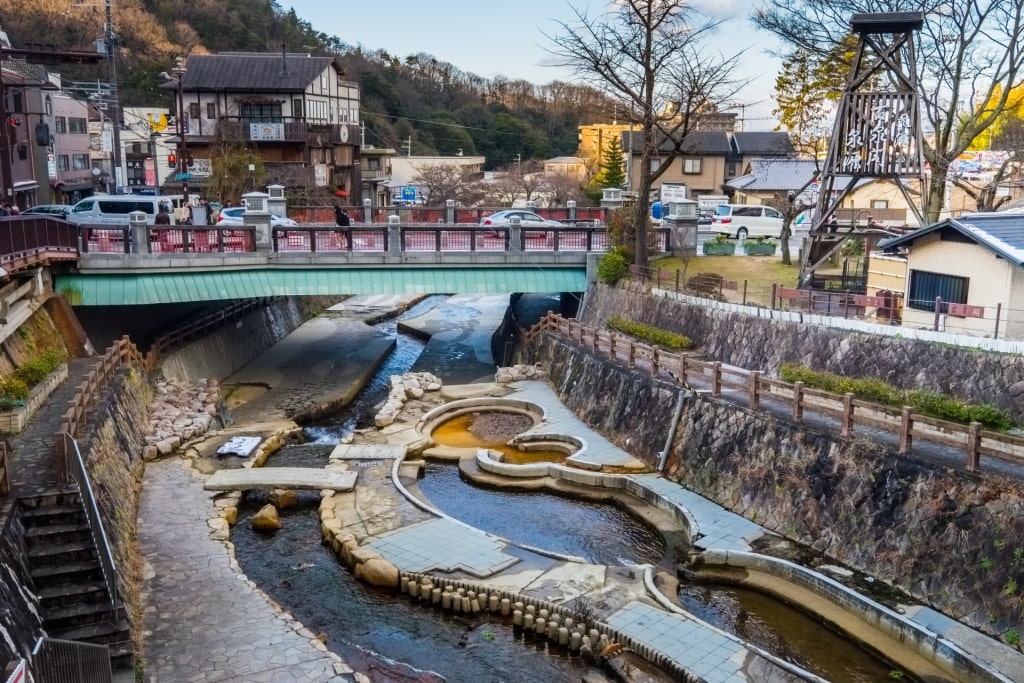
Arima Onsen, Kobe
If you’re a fan of mountain hot springs, consider swinging by the Arima Onsen—located at the base of Rokko’s northern slopes—for a well-deserved soak after your alpine ramble.
Read: Best Things to Do in Kobe
Sakurajima, Kagoshima
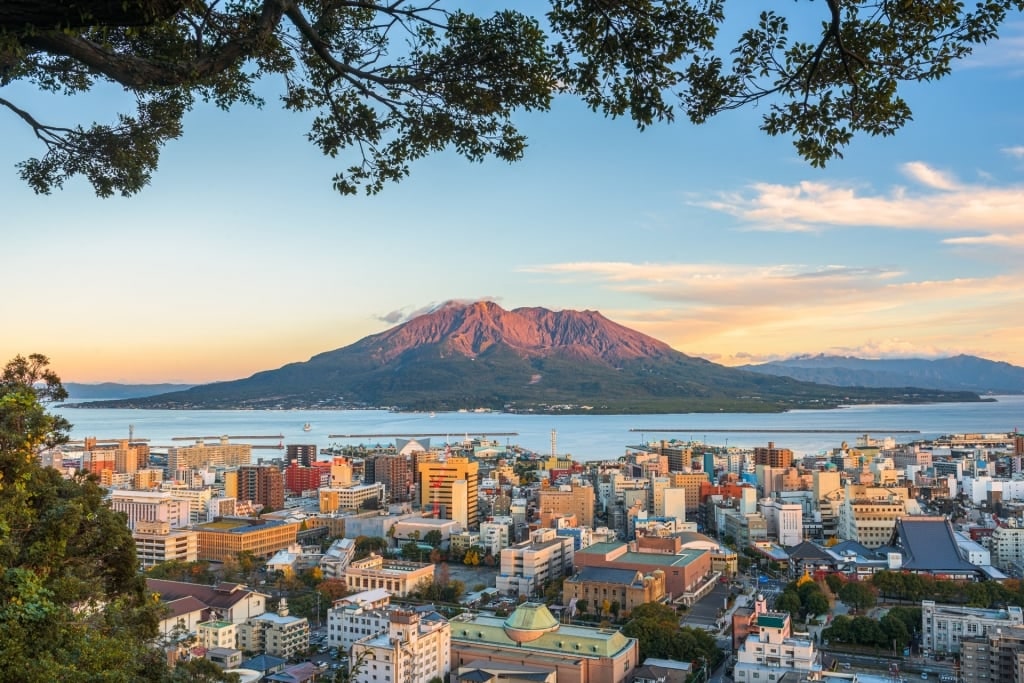
Sakurajima, Kagoshima
When it comes to arresting mountains in Japan, it’s hard to beat the fierce-looking outline of Sakurajima—an active volcano, centered in the northern reaches of Kagoshima Bay.
Once upon a time, Sakurajima was a small island, but due to a 1914 eruption, the mountain linked up to the Osumi peninsula at the southern tip of Kyushu, Japan’s third-largest island.
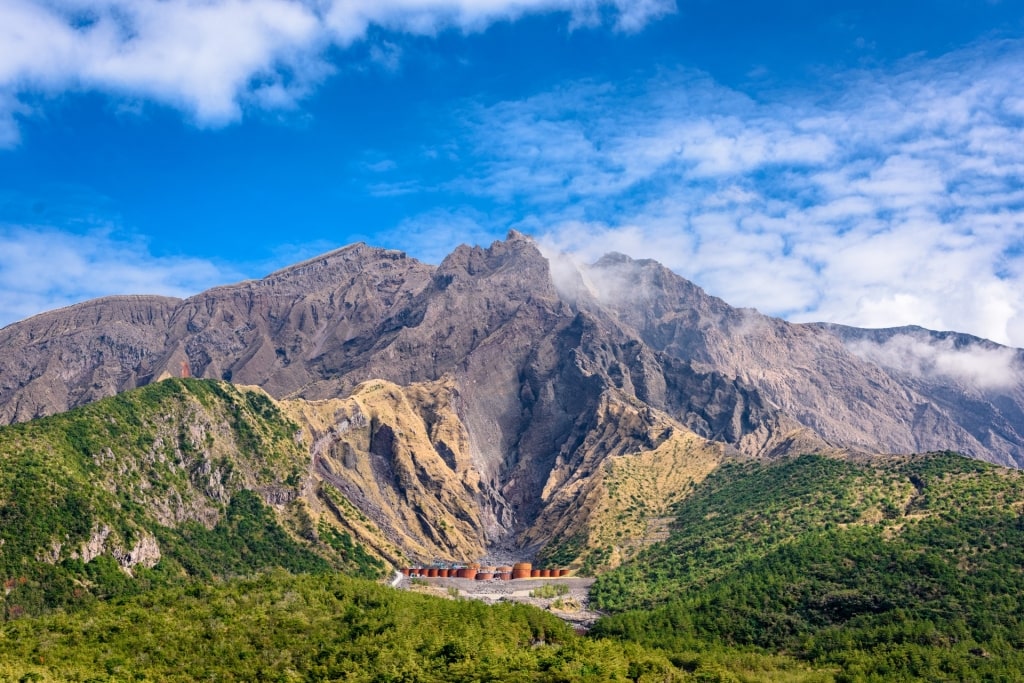
Sakurajima, Kagoshima
Sakurajima’s austere beauty stirs the soul. You’ll likely notice how close this stratovolcano is to the urban center of Kagoshima. And you can’t miss the near-constant plume of smoke belched out from its crater, either.
Sakurajima’s eastern Showa Crater is famed for its impressive lava-filled displays. The authorities won’t let you get too close to any of the craters, although both the Arimura and Kurokami observation points offer inspiring views of the volcanic slopes and frequent eruptions.
Mt. Usu, Sapporo
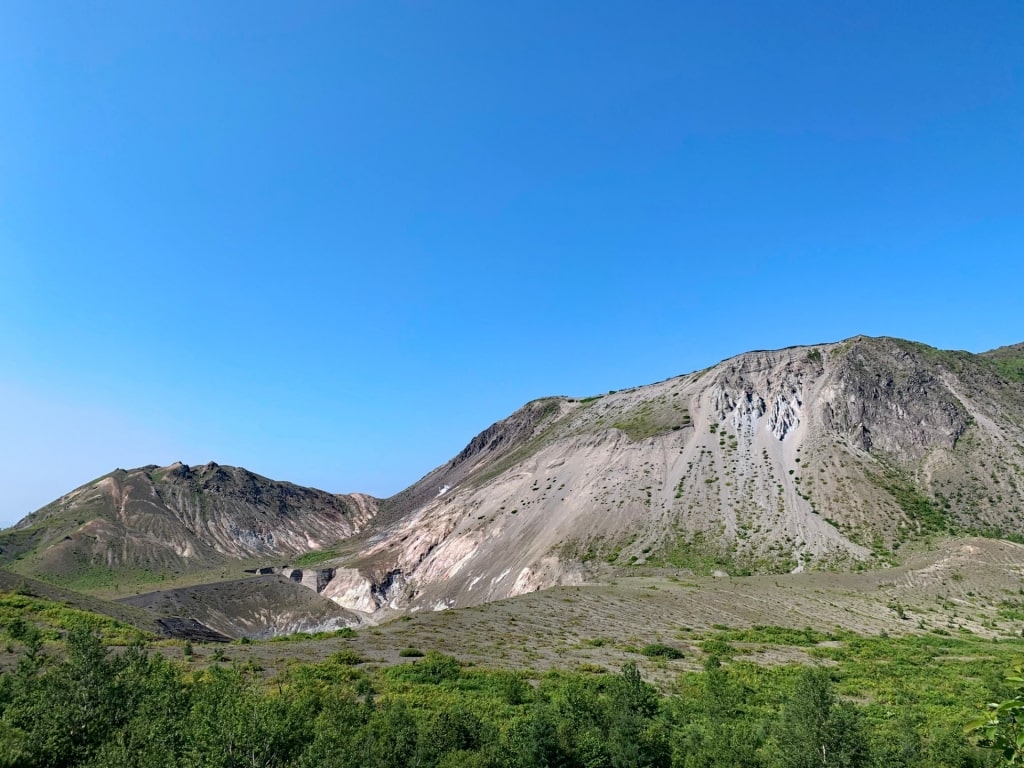
Mt. Usu, Sapporo
Mt. Usu, a little over two hours from Sapporo, Hokkaido’s main city, will offer you the chance to get up close to an active stratovolcano’s crater.
While exploring Usu’s summit, you’ll also be treated to exceptional views of the bucolic Lake Toya, and the picturesque countryside below.
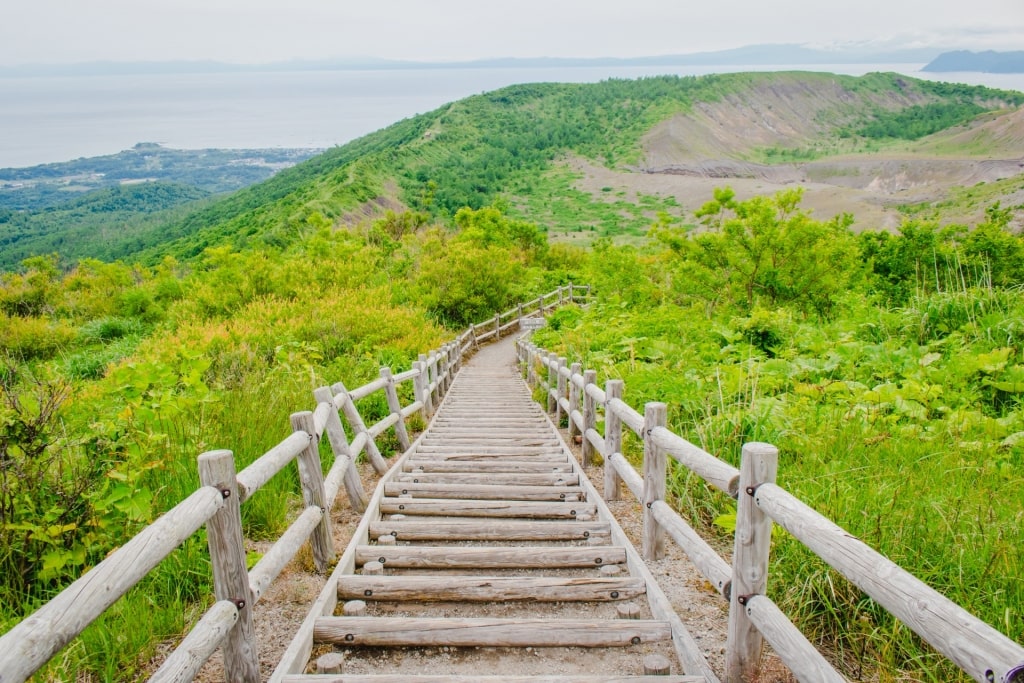
Shikotsu-Toya National Park, Sapporo
The volcano is located in Shikotsu-Toya National Park. The last eruption was in 2000 but the mountain is carefully monitored to ensure visitors are safe.
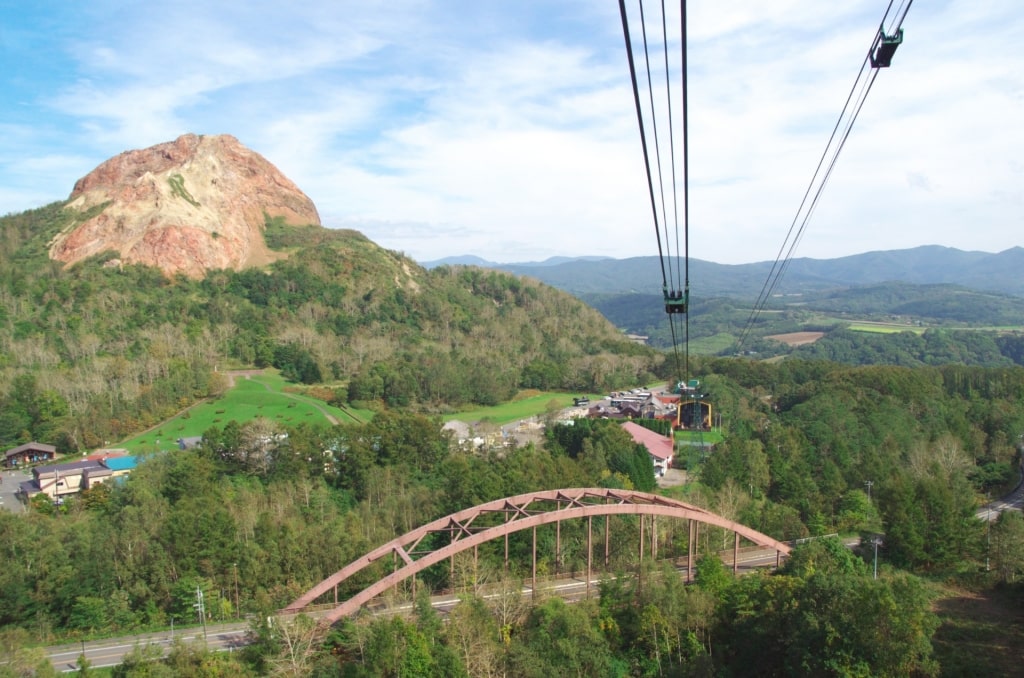
Usuzan Ropeway, Sapporo
If time is an issue, you can reach the top of Mt. Usu’s Shōwa-Shinzan peak by jumping on the Usuzan Ropeway cable car, which will deposit you close to the summit.
Once you reach the top of the volcano, fairly gentle walks along different mountain pathways, passing through alpine pastures, will take you to various observation decks.
The observation points will offer you sweeping vistas over the steaming 1977 crater, Lake Toya, and even Uchiura Bay.
Mt. Hakodate, Hakodate
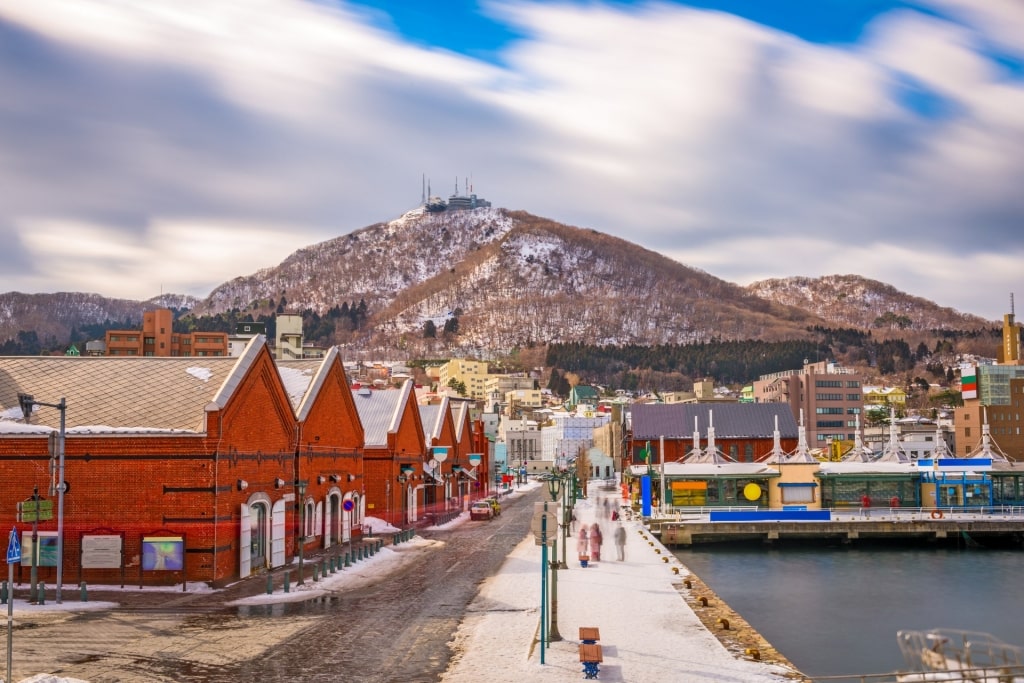
Mt. Hakodate, Hakodate
Any list of the mountains in Japan would be incomplete if it didn’t include Mt. Hakodate, its marvelous cable car journey to the summit, and of course the breathtaking view from Mt. Hakodate Observatory across the port city of Hakodate.
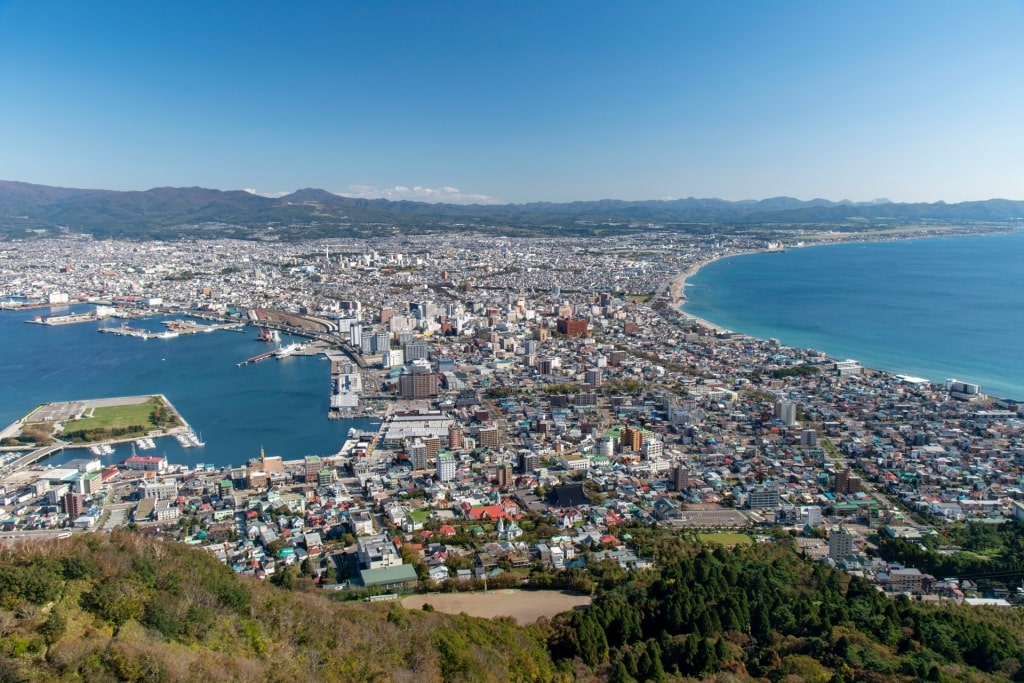
Mt. Hakodate, Hakodate
From the pinnacle of the mountain, you can see the vast expanse of the Oshima Peninsula and Hakodate Bay. Apart from the observation platforms atop Mt. Hakodate, you’ll also run across trinket shops and tea rooms, which should more than occupy your time on the mountain.
If you need to stretch your legs, skip the gondola ride altogether and opt for a hike instead. One of the best hikes in Japan, it’s a fairly easy ascent to the summit along woodland trails. You should be able to tackle it in an hour or two, depending on how fast you plan on moving up the mountainside.
Read: Best Things to Buy in Japan
Mt. Takao, Tokyo
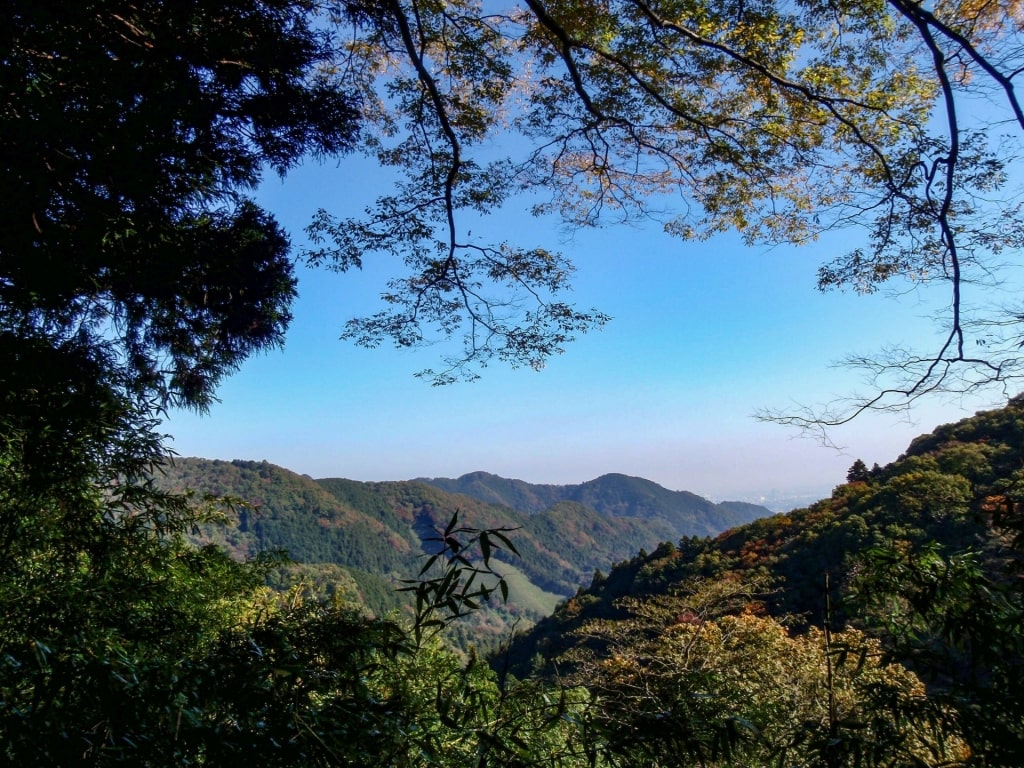
Mt. Takao, Tokyo
Less than an hour from Tokyo, Mt. Takao is yet another fascinating bit of forested alpine terrain serving up spectacular views of the surrounding region.
From Mt. Takao, you can soak in sprawling Tokyo and its famous skyline below, and Mt. Fuji in the distance. Takao is also immersed in rich Japanese Shinto-Buddhist temple culture and history.
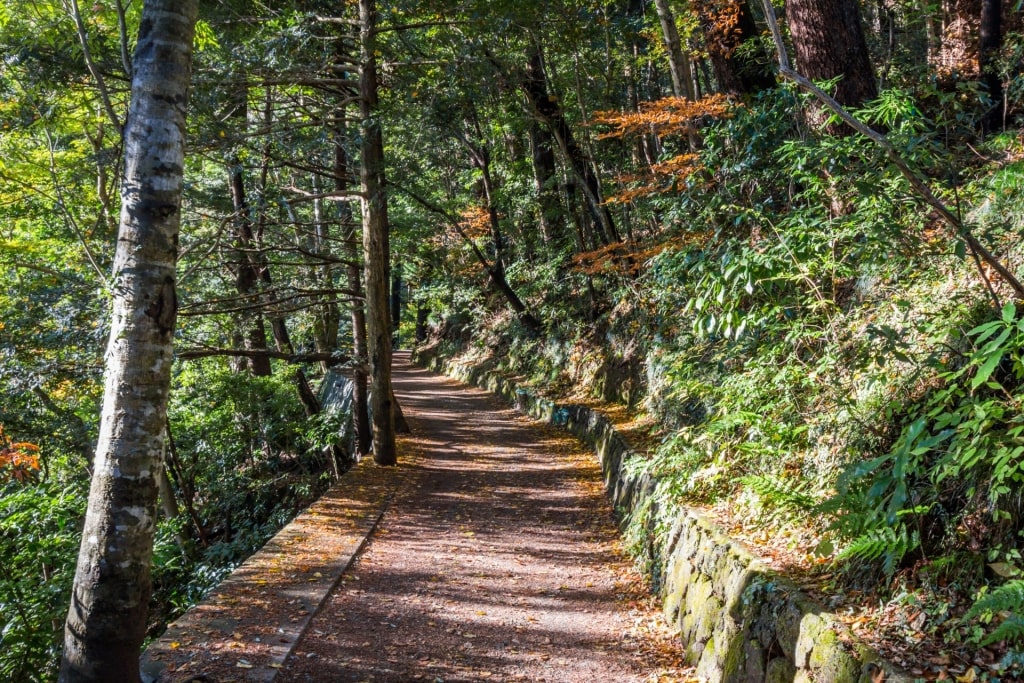
Mt. Takao, Tokyo
Paved, and narrower, unpaved hiking trails should get you to the summit in two hours or less. You can also ride a cable car halfway up the mountain, then trek toward an even higher observation deck.
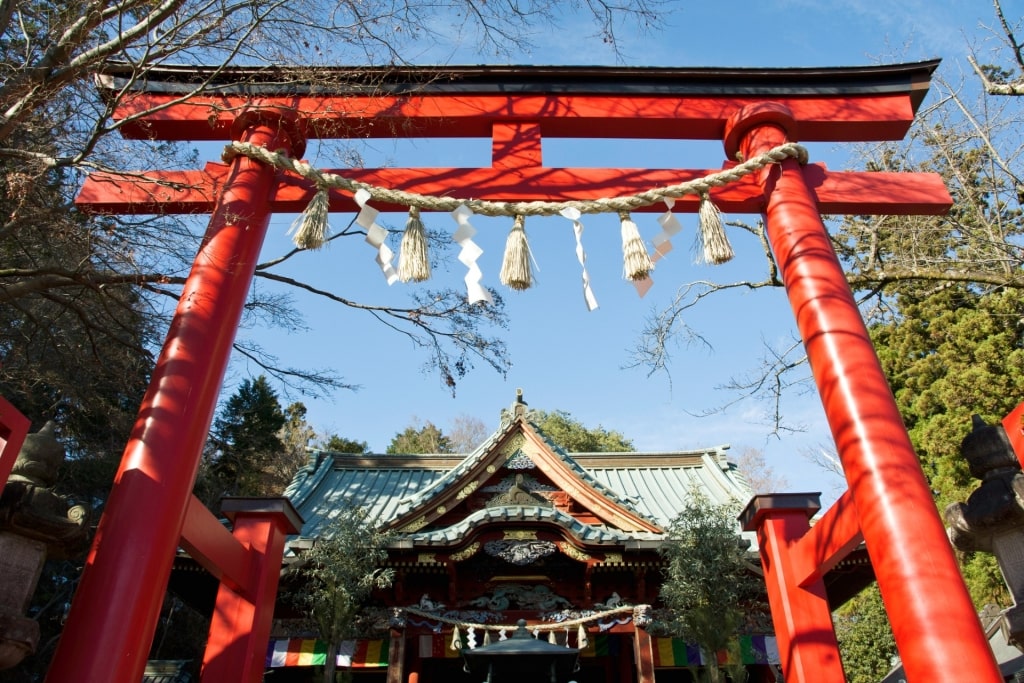
Takaosan Yakuoin Temple, Tokyo
Near the summit, you can visit the Takaosan Yakuoin Temple, where you can get a quick education about mountain asceticism, or shugendo, and sample some Buddhist-inspired vegetarian cuisine.
You’ll also be able to study up on the Shinto religion’s Tengu, which are impish supernatural creatures with shape-shifting abilities and excellent swordsmanship, who, according to legend, call Mt. Takao home.
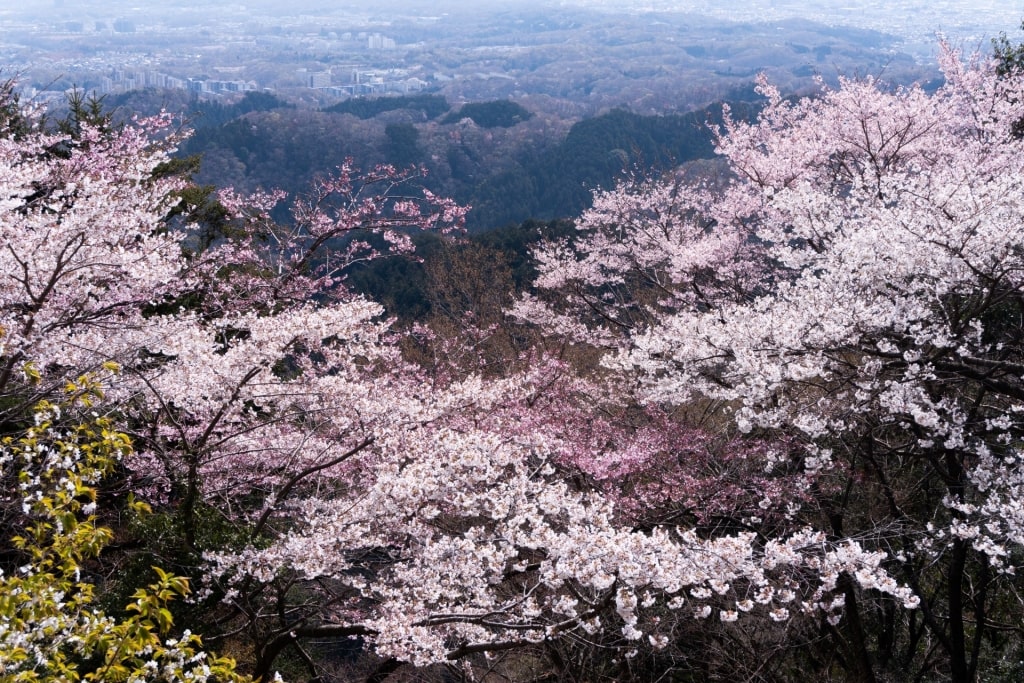
Mt. Takao, Tokyo
Mt. Takao is renowned for its cherry blossoms as well, which bloom later than they do in Tokyo. Come April, there’s a good chance you’ll catch these flowering trees in their full glory, especially if you hike out to Itchodaira, also known as the “Thousand Cherry Blossom Trees of Mt. Takao”, about half an hour from the summit.
Mt. Hakkoda, Aomori
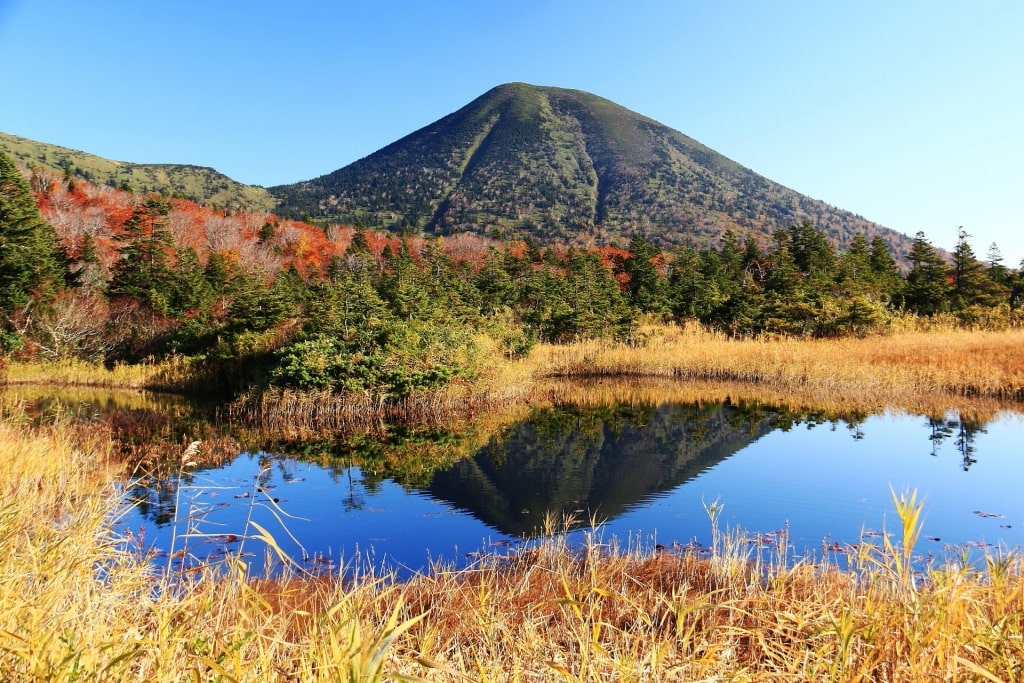
Mt. Hakkoda, Aomori
Just south of Aomori City, along Honshu’s northern coast, you’ll find a hiker’s paradise, located inside the Towada-Hachimantai National Park.
The park is a literal hotspot of thermal spring activity. The park is also home to Mt. Hakkoda’s volcanic summits, with many picturesque hiking trails nearby. Verdant scenery, elevated marshlands, hot spring resorts, and thermal sulfuric ponds dot the landscape here.
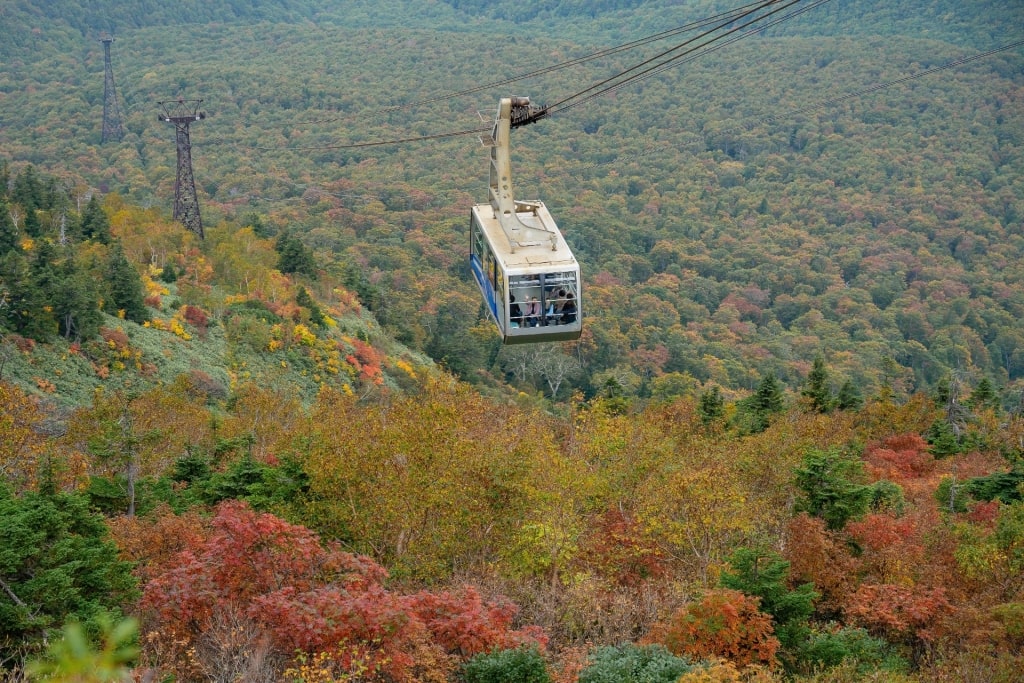
Hakkoda Ropeway, Aomori
Mt. Hakkoda impresses with its multi-hued blanket of trees during fall in Japan. But no matter when you arrive, try for one of the summits, if time allows, like Tamoyachidake, which you can reach along the Tamoyachidake Nature Trail, or via the Hakkoda Ropeway.
If you’re a devotee of thermal springs, drop by the park’s Sukayu Onsen, with its quintessential wooden décor, mixed bathing and soothing hot water, set against a cool environment at an elevation of over 3,000 feet.
Mt. Yoshino, Osaka
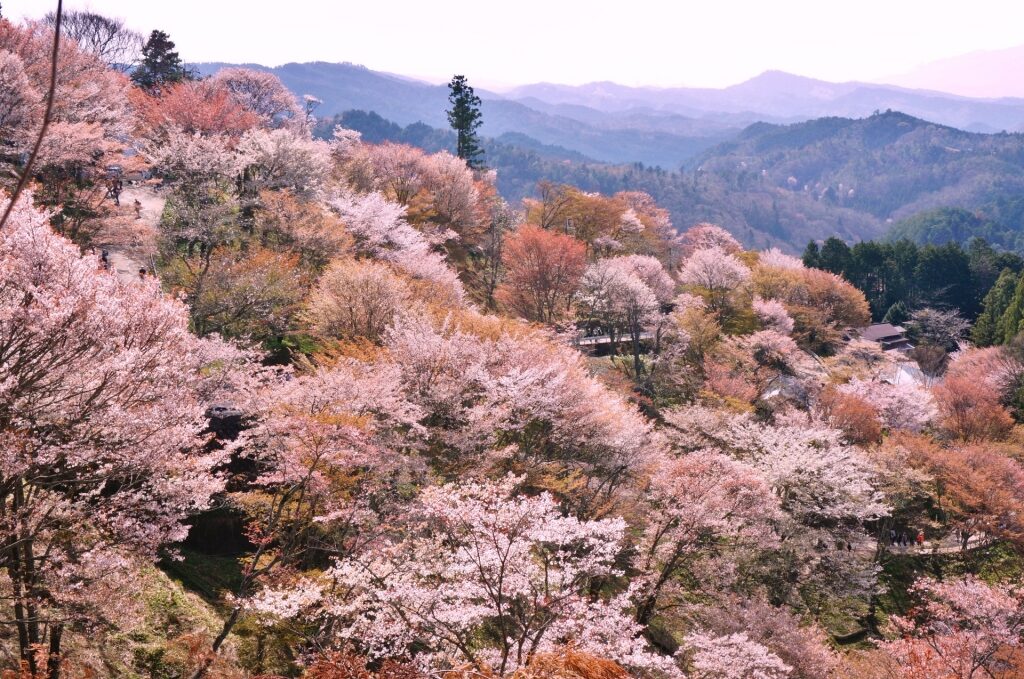
Mt. Yoshino, Osaka
If you’re longing to see the pinkish blooms of Japan’s famed cherry blossoms, Mt. Yoshino’s northern slopes, filled to the brim with more than 30,000 cherry trees in season, should absolutely make your bucket list of mountains to visit in Japan.
Mt. Yoshino, southwest of Osaka, typically breaks out in cherry blossoms in March or April. The cherry tree groves are divided into areas marked by the word “thousand”, or senbon.
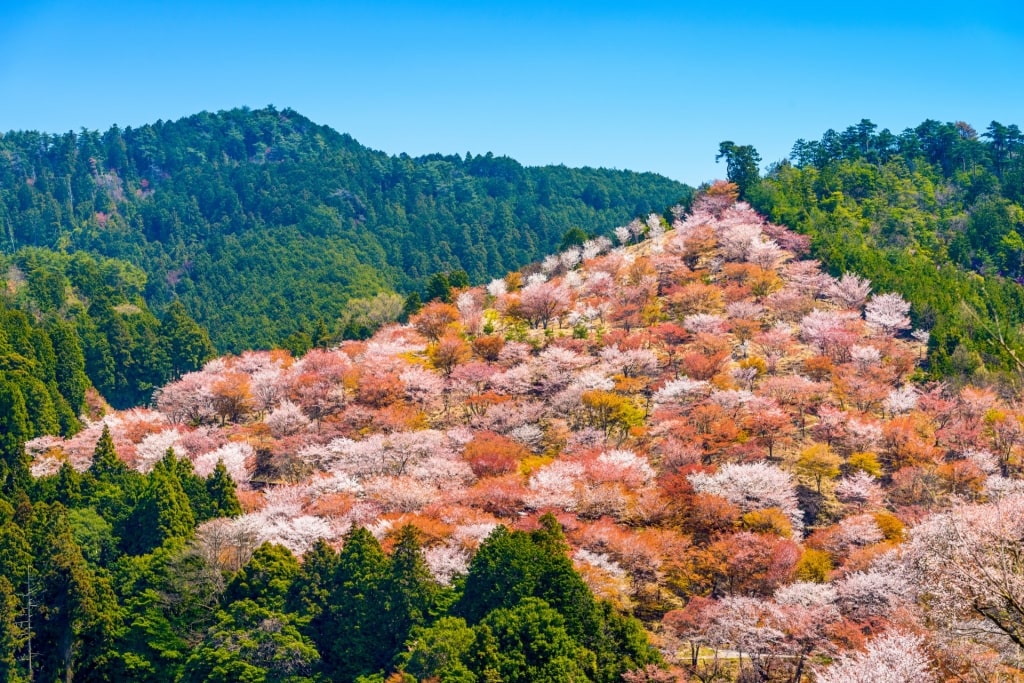
Mt. Yoshino, Osaka
For example, you have the Shimo-senbon (lower 1,000), Naka-senbon (middle 1,000) and Kami-senbon (upper 1,000). The blossoms flower in staggered stages, with higher altitudes blooming later. The Oku-senbon, higher still, flowers latest of all.
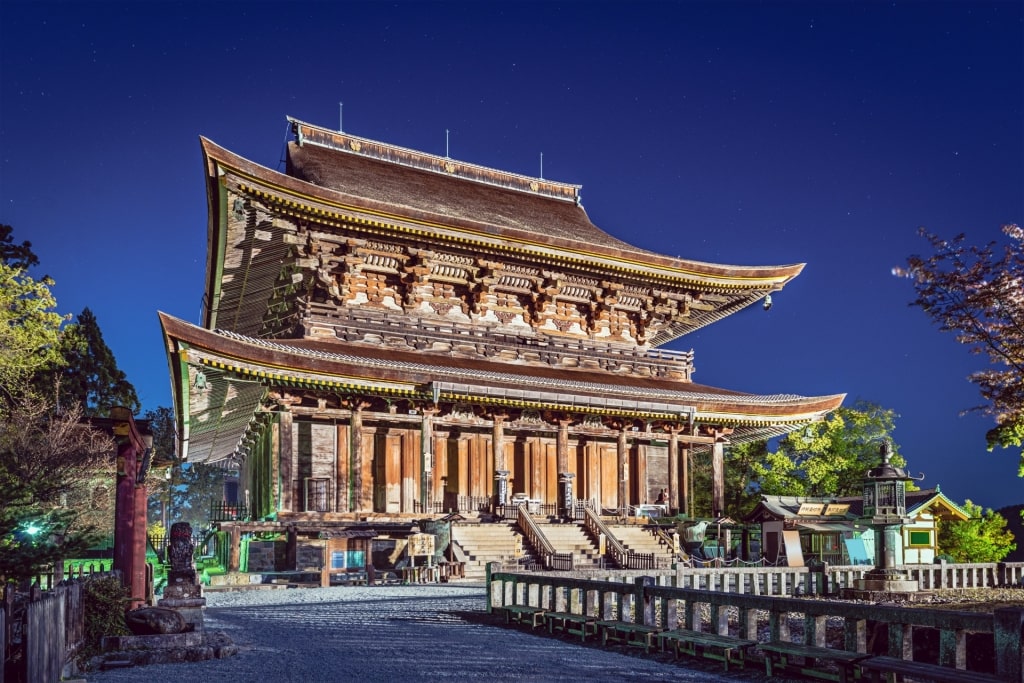
Kinpusenji Temple, Osaka
If you miss the cherry blossom season that Japan is known for, Mt. Yoshino is still worth a visit. The area hosts many Shinto shrines, including the Yoshimizu Shrine, the Kinpu Shrine, and the massive wooden Kinpusenji Temple.
You’ll also come across forested walking paths, many of which point toward Yoshino Station, which leads to the city of Nara.
Read: Famous Temples to Visit in Japan
Mt. Inari, Kyoto
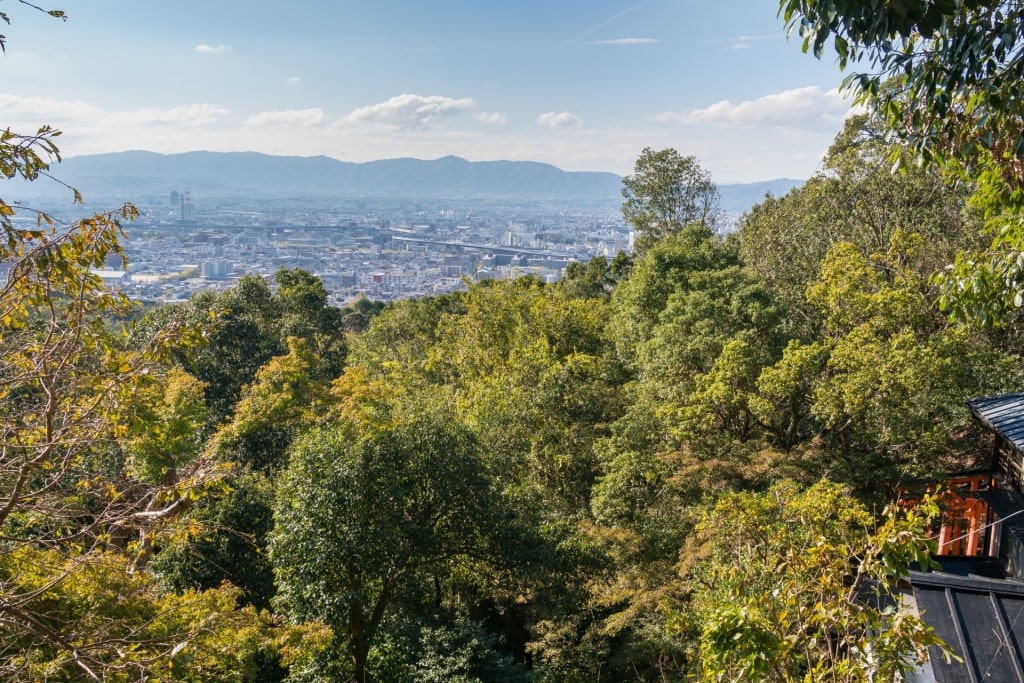
Mt. Inari, Kyoto
While Mt. Inari, on the edge of Kyoto, might not be the tallest mountain in Japan, coming in at a mere 764 feet, it will still offer you plenty to do and see during your sojourn to this notable Shinto site.
Mt. Inari’s Fushimi Inari Shrine stands out as a distinctive example of Japanese architecture and is a must if you happen to be in the area. The shrine features many artificial tunnels, created by thousands of traditional vermilion-colored torii gates.
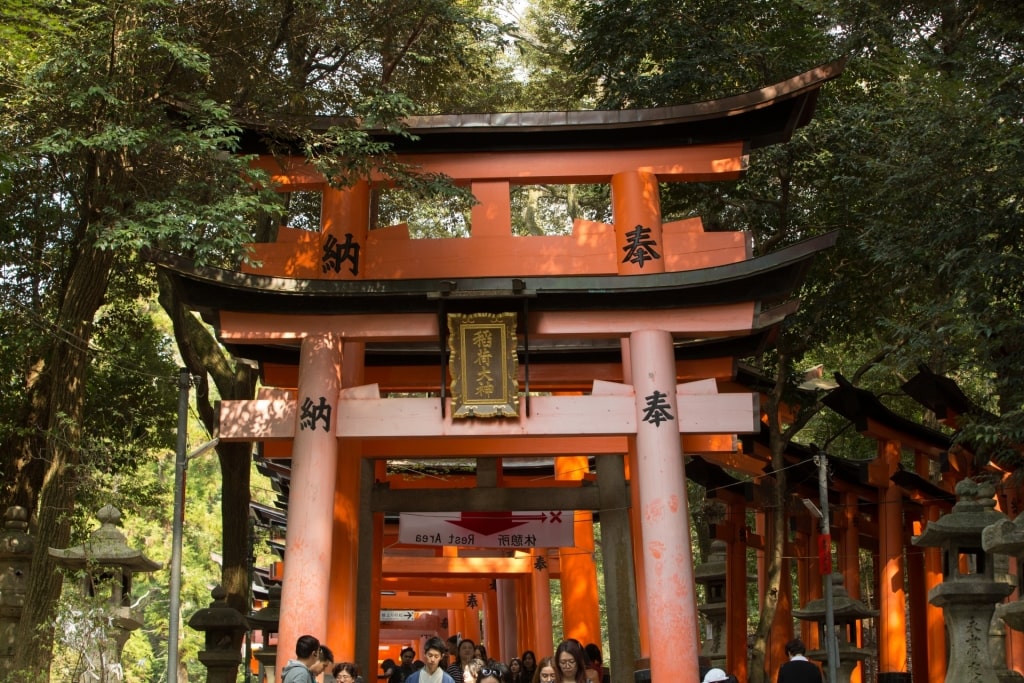
Fushimi Inari Shrine, Kyoto
Fushimi Inari, a World Heritage Site, is dedicated to the fox deity Inari, who is tasked with watching over humanity’s fertility, as well as the rice harvest. The torii gate “tunnels” cross into woodland hills and nearby hiking trails, which lead to the summit of Mt. Inari.
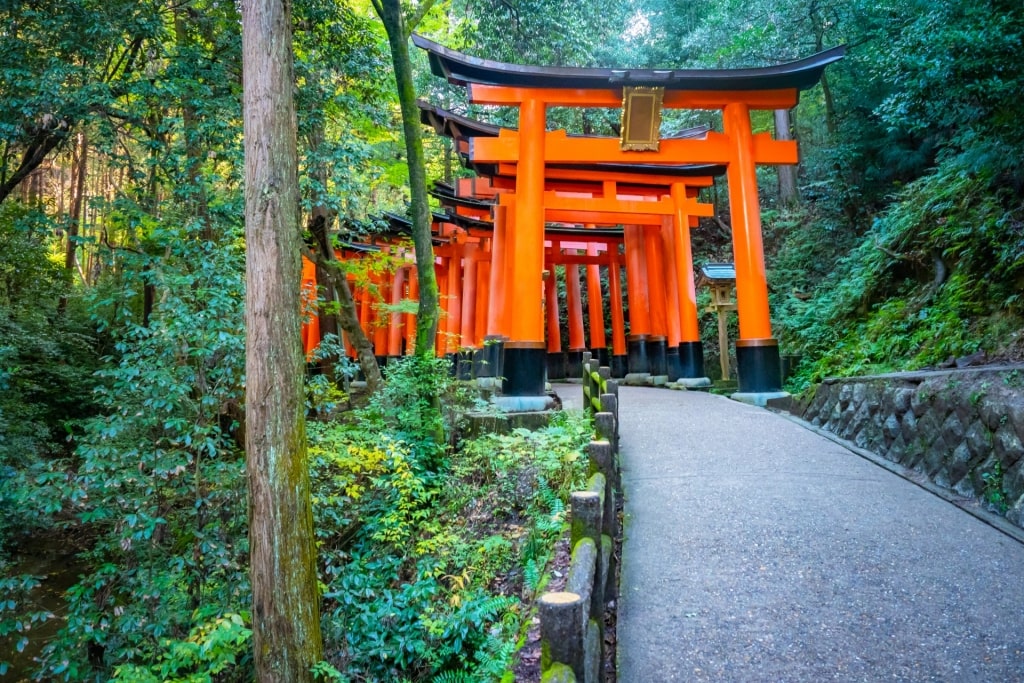
Fushimi Inari Shrine, Kyoto
During your ascent, you’ll pass by places to sample Japanese cuisine (try the sparrow yakitori skewers, if you dare), tea houses, and lesser shrines like Naka-no-Yashiro, plus stairs to help you gain more elevation.
For brilliant views across Kyoto, you can stop at Yotsu-suji, without having to slog all the way to the summit. Yotsu-suji is a great option if you’re running out of time, or need to give your tired feet a rest. Budget several hours if you plan to take on the full Mt. Inari trek.
Read: Two Days in Kyoto
Mt. Hakone, Tokyo Area
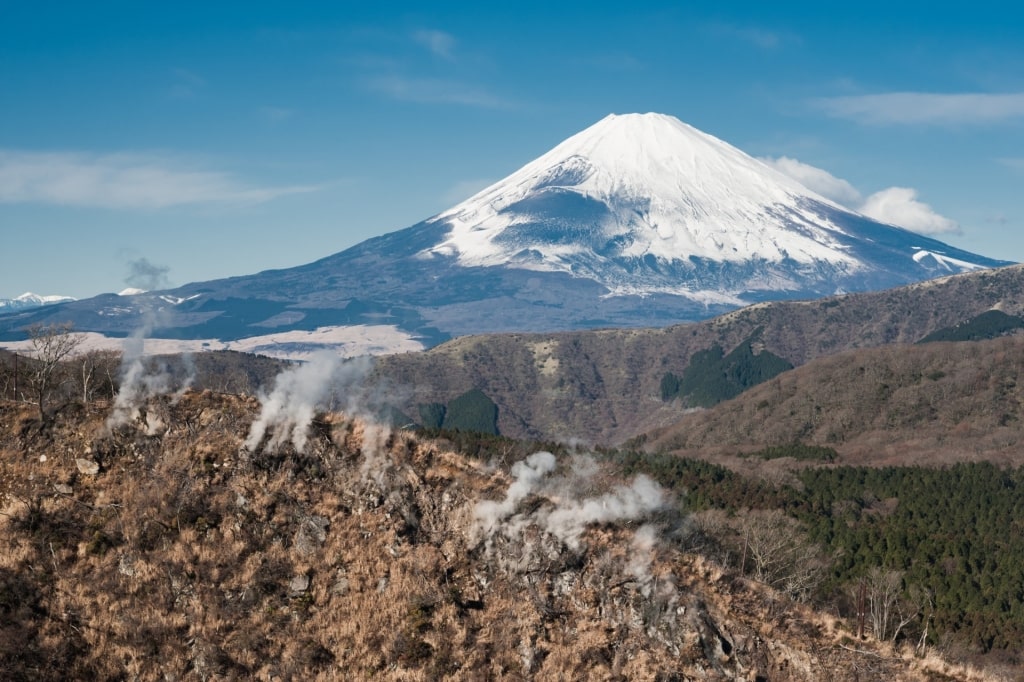
Mt. Hakone, Tokyo Area
For more hiking, and yet another glorious view of Mt. Fuji (when the fog lifts), head to the complex volcano Mt. Hakone.
This volcanic region features fantastic craters emitting steam and sulphuric vapor, a caldera lake, and plenty of hiking opportunities through a geological wonderland.
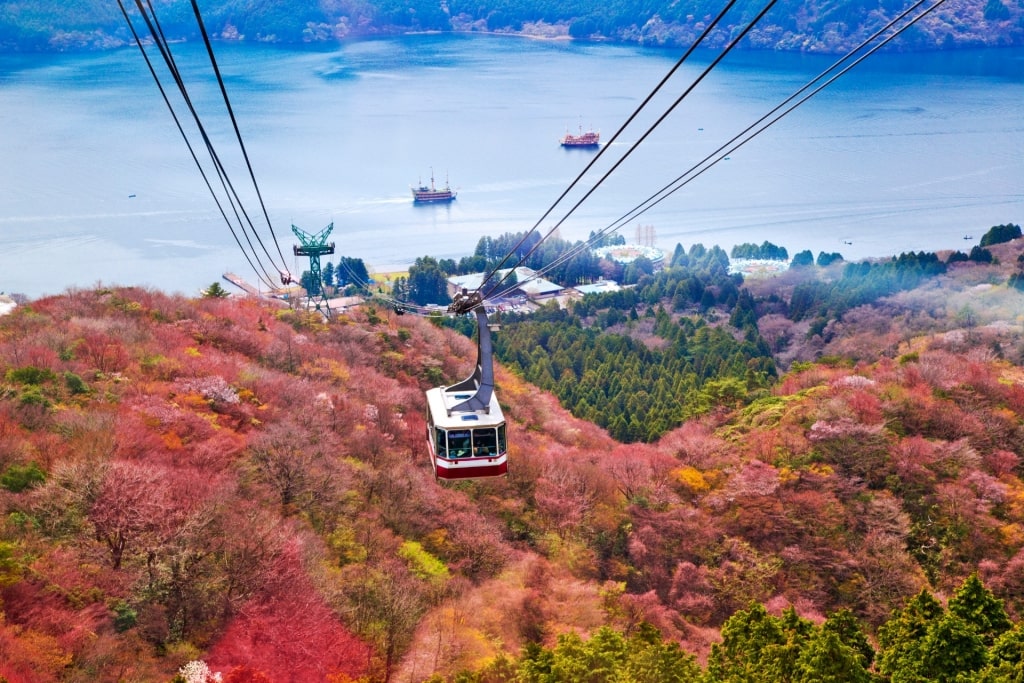
Hakone Komagatake Ropeway, Tokyo Area
Access to Mt. Hakone and its Komagatake peak, which is not the same as Mt. Komagatake, located on Hokkaido Island, is quick and easy via the Hakone Komagatake Ropeway. Board a cable car near the tree-lined Lake Ashinoko, then ride your gondola up to the highest station.
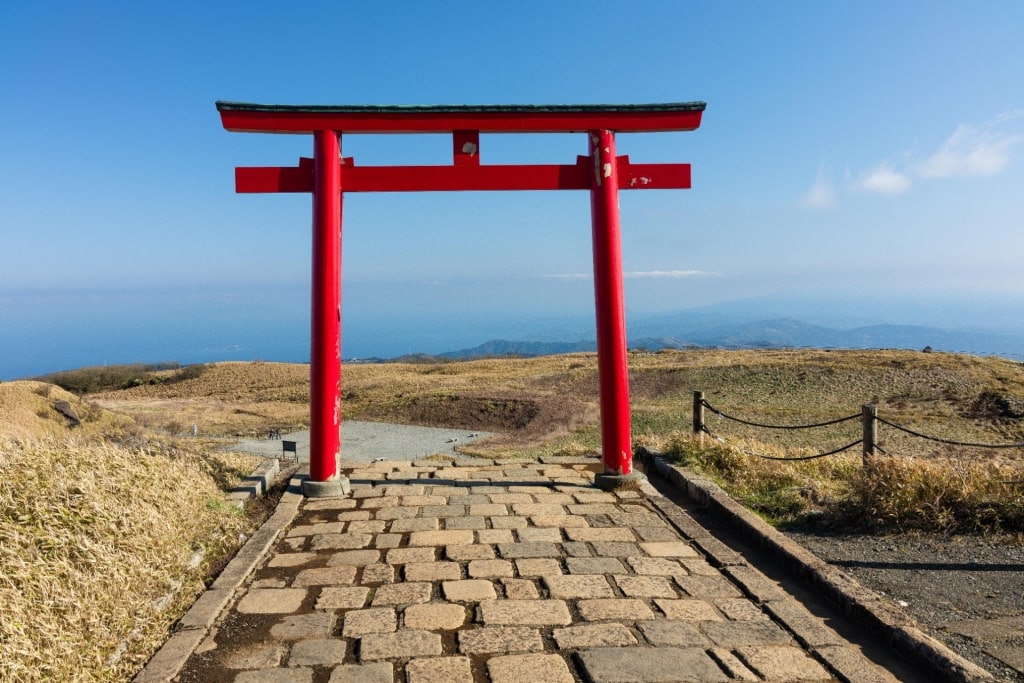
Hakone Shrine Mototsumiya, Tokyo Area
The Hakone Shrine Mototsumiya and the summit are a quick jaunt from the upper station. Weather permitting, the panoramas over the caldera lake and Mt. Fuji in the near distance truly are exceptional.
If you take a hiking trail back down Mt. Hakone, you’ll get the chance to walk through a fairly diverse woodland area, featuring mountain ash, oak trees, Japanese cedar, Japanese maple and more.
Read: Three Days in Tokyo: The Ultimate Itinerary
Mt. Kaimon, Kagoshima
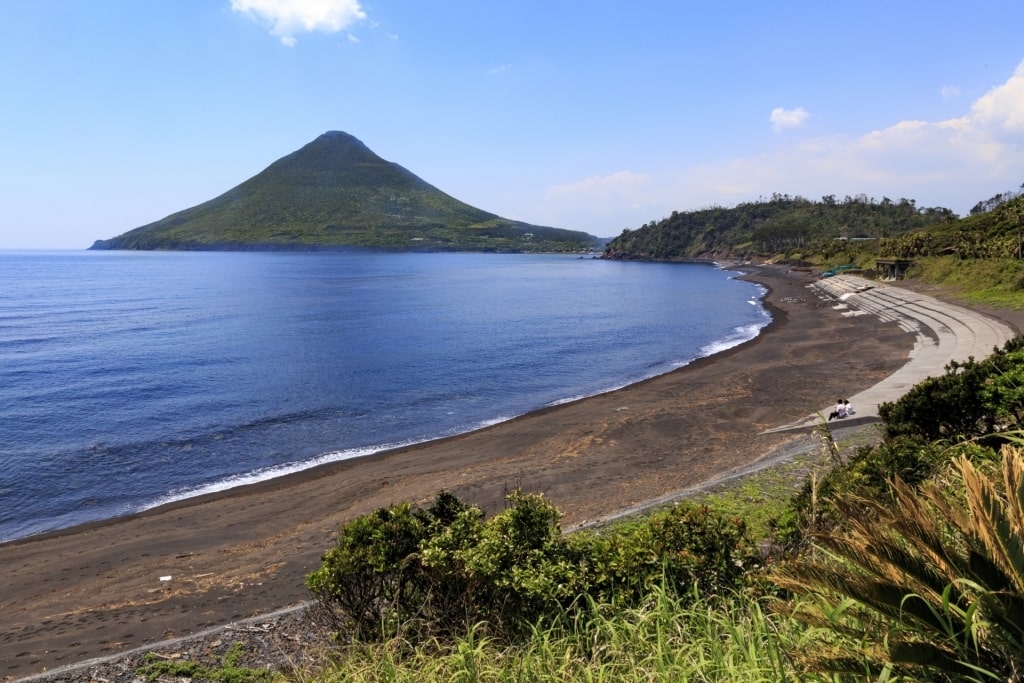
Mt. Kaimon, Kagoshima
Among the mountains in Japan, Mt. Kaimon, near the southern end of Kyushu Island, isn’t a particularly tall peak, coming in at approximately 3,031 feet. But what this dormant volcano lacks in size it makes up with its flawless conical silhouette.
“Satsuma Fuji” is a local nickname for Mt. Kaimon, due to its miniaturized resemblance to the much larger Mt. Fuji. “Satsuma” is the former name of the feudal province in which this green volcano juts out into the sea.
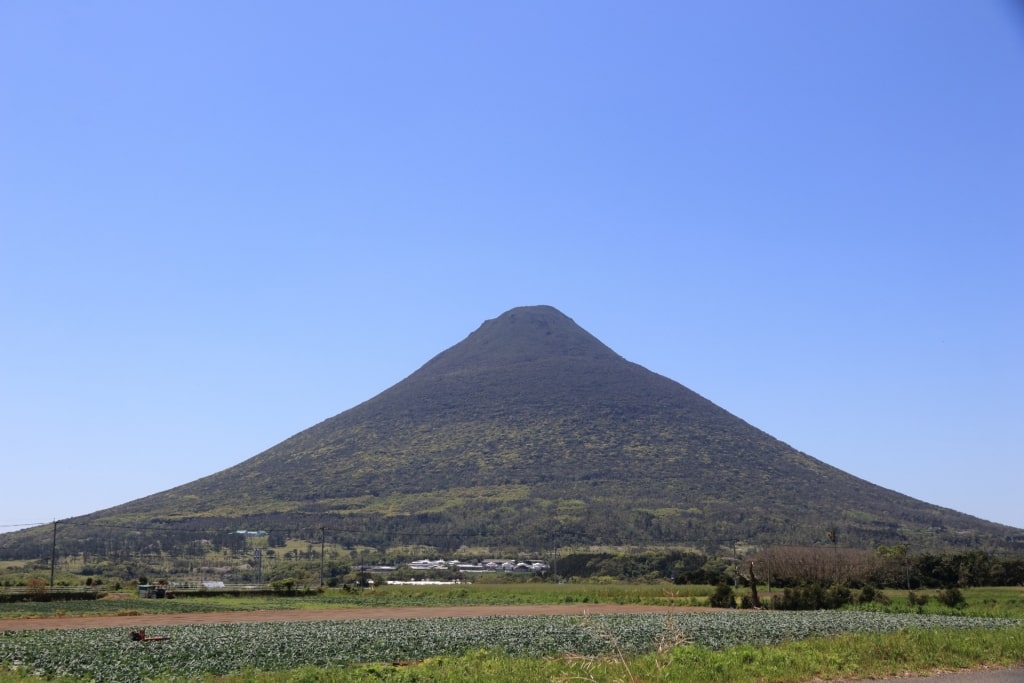
Mt. Kaimon, Kagoshima
From Kagoshima City, you can reach Mt. Kaimon by car in under two hours. If you want to tramp to the summit, you’ll find a well-marked paved hiking trail that will take you to the top of this grassy, moss-covered volcano.
If you don’t have four-plus hours to spare to hike to the summit and climb back down, you can choose a partial hike instead. The panoramas along the footpath offer magnificent views of the Pacific Ocean and the surrounding Kagoshima coastline well before you reach the top of the mountain.
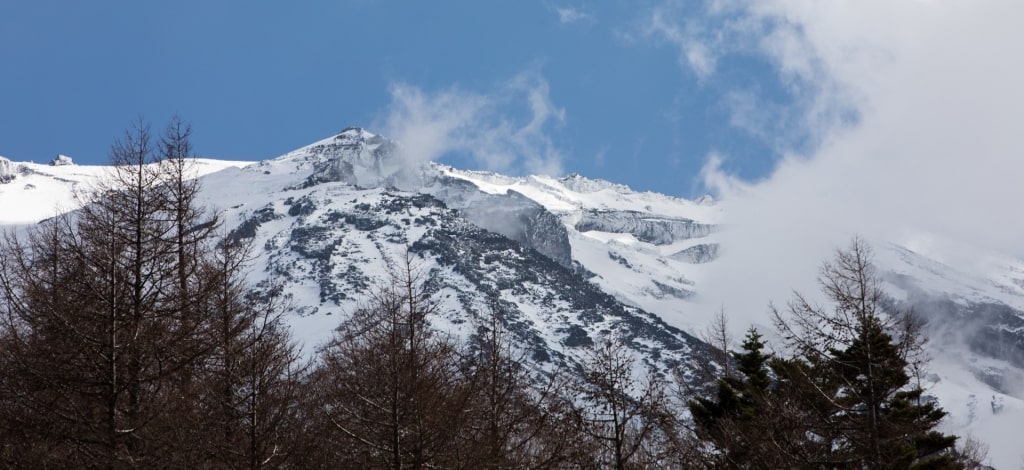
Mt. Fuji, Tokyo
If you’re sold on the geological variety and exceptional beauty of the mountains in Japan, book a cruise to Japan today and explore this proud nation’s alpine landscapes for yourself.



